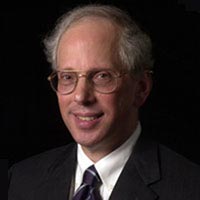Workshop on
Quantum Mechanics: Axiomatics of Measurements and connections with Computing and Information Retrieval
Classical Information Capacity of Bosonic Communications: Single User, Multiple Access, and Broadcast
Massachusetts Institute of Technology
>VITAE:
Jeffrey H. Shapiro Director - Julius A. Stratton Professor of Electrical
Engineering
- Professor Jeffrey H. Shapiro is Director of the Research Laboratory
of Electronics (RLE) at the Massachusetts Institute of Technology (MIT).
- Dr. Shapiro's research interests have centered on the application of
communication theory to optical systems. He is best known for his work
on the generation, detection, and application of squeezed-state light
beams, but he has also published extensively in the areas of atmospheric
optical communication, coherent laser radar, and quantum information science.
- Dr. Shapiro is a fellow of the Institute of Electrical and Electronics
Engineers, of the Optical Society of America, of the American Physical
Society, and of the Institute of Physics, and he is a member of SPIE (The
International Society for Optical Engineering). He has been an Associate
Editor of the IEEE Transactions on Information Theory and the Journal
of the Optical Society of America, and was the Principal Organizer of
the Sixth International Conference on Quantum Communication, Measurement
and Computing (QCMC'02).

Information theory probes the ultimate limits on reliable communication. Optical communication systems are limited by noises of quantum-mechanical origin. Determining the ultimate limits on the transmission of classical information over optical channels is therefore the province of quantum information theory applied to bosonic channels, because photons are bosons. This talk will review some information capacity results for single-user, multiple-access, and broadcast bosonic channels, all of which are constructed from beam splitter models for propagation. An exact capacity result is available for the single-user pure-loss channel, and a capacity result has been conjectured for the single-user thermal-noise channel whose validity would be implied by a related conjecture on the minimum von Neumann entropy that can be achieved at the channel output. Interestingly, single-use encoding over coherent states suffices to achieve the pure-loss capacity and the conjectured thermal-noise capacity. For the lossless multiple-access channel, there are inner and outer bounds on the capacity region. It turns out that single-use encoding over coherent states achieves the sum-rate capacity, but non-classical light is needed to reach the single-user capacities in the multiple-access scenario. For the broadcast channel, there is a conjectured capacity region - achievable with single-use coherent-state encoding - whose validity would be implied by a second minimum output entropy conjecture.